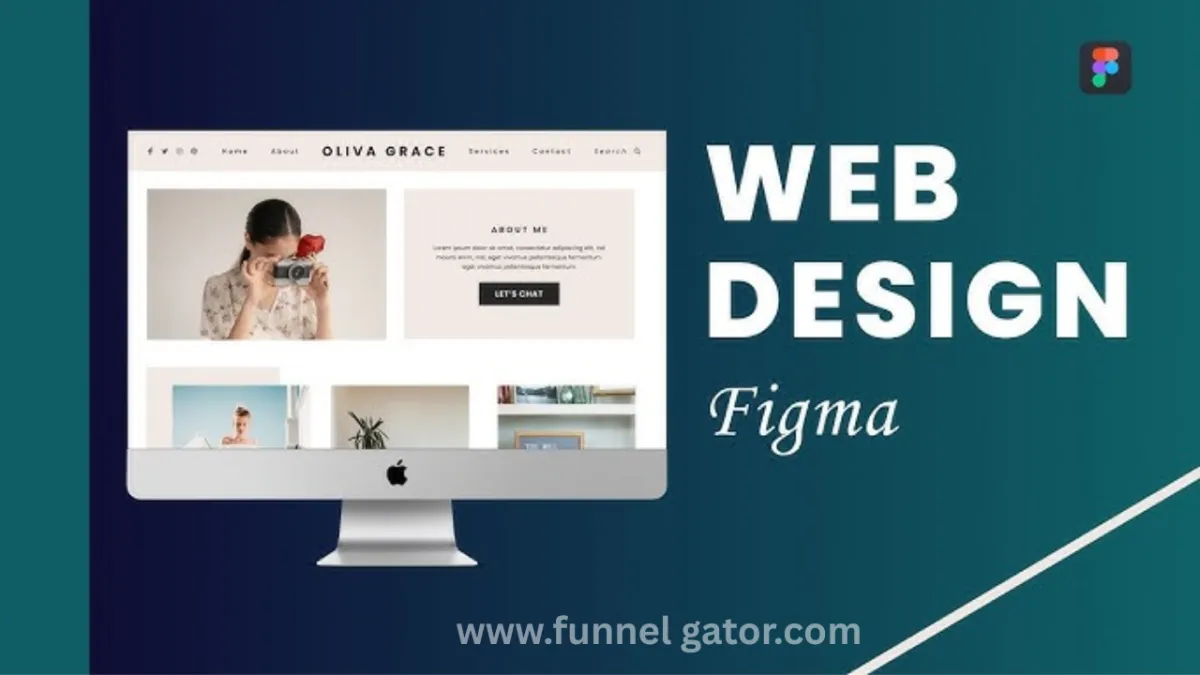
Figma Website Design: A Beginner-Friendly Guide to Building Beautiful Websites
In today's digital world, having a stunning website is no longer optional—it's a must. Whether you’re a freelancer, a startup founder, or someone building a personal brand, your website is your front door. But how do you create a website that’s both beautiful and functional without drowning in code?
Let me introduce you to Figma website design—a powerful, collaborative, and easy-to-use tool that’s revolutionizing how people design websites.
What is Figma Website Design?
At its core, Figma is a web-based design tool used for creating everything from simple wireframes to full-scale website designs. Think of it like Photoshop, but with a modern twist—it’s built for the web, works in your browser, and supports real-time collaboration. Designers, developers, marketers, and even non-tech folks love it because it’s fast, intuitive, and just makes sense.
Quick anecdote: When I first used Figma, I was blown away by how easily I could design a landing page with drag-and-drop tools—and my developer could comment and edit right there with me. No back-and-forth emails. It felt like magic.
Why Choose Figma for Website Design?
Let’s break it down. Here’s why more and more people are ditching old-school design tools and switching to Figma website design:
🖱 Browser-based: No need to download heavy software.
🤝 Real-time collaboration: Work with your team live—just like Google Docs.
🎨 Intuitive UI: Even beginners can pick it up fast.
🔗 Shareable designs: Send a link, get instant feedback.
🧩 Plugin support: From icons to stock photos, everything is a click away.
Need more reasons? Here are some top Figma features you’ll love.
Step-by-Step Guide to Designing a Website in Figma
Let’s walk through how you can create your very first website design using Figma. Don’t worry, you don’t need to be a designer!
1. Sign Up and Create a New File
Go to Figma.com and create a free account. Once inside, hit the "+" to create a new design file. This is your blank canvas—get ready to bring your ideas to life.
Tip: You can also use Figma templates to get started faster.
2. Set Up Your Frame (Canvas Size)
In the toolbar, select the Frame Tool and choose a preset like “Desktop” or “Mobile.” This tells Figma what screen size you're designing for.
3. Start with Wireframing
Before adding colors and images, sketch a rough layout using rectangles and placeholder text. This is called a wireframe, and it helps you plan the structure of your site.
Learn more about wireframing in Figma.
4. Add Design Elements
Now the fun begins. Start adding:
Typography: Pick fonts from the built-in library.
Colors: Use the color picker or import your brand palette.
Images: Drag and drop or use a plugin like Unsplash for Figma.
Icons: Add icons using the Feather Icons plugin.
5. Create Components
If you're using the same button, nav bar, or card multiple times, turn them into components. This saves time and keeps your design consistent.
6. Use Auto Layout
Auto Layout lets your design adapt automatically to content changes. Perfect for responsive design! Learn Auto Layout here.
7. Prototype Your Website
Click on the Prototype tab, link your frames, and add transitions. Now, you can click through your design like a real website. It’s great for testing and presenting.
Real-life story: A client once told me they thought the prototype I sent was an actual coded website—it was that realistic. That's the power of Figma website design.
8. Share and Get Feedback
Click Share, copy the link, and send it to teammates, clients, or even your developer. They can leave comments directly on the design.
9. Hand Off to Developers
Use the Inspect panel to give developers access to design specs like sizes, colors, and code snippets. You can even integrate with tools like Zeplin or Storybook.
Tips to Master Figma Website Design
💡 Use Figma plugins to speed up your workflow.
📚 Follow top creators on the Figma Community for inspiration.
📁 Organize layers and use naming conventions.
⌨️ Learn keyboard shortcuts to work faster.
📱 Always design with responsiveness in mind.
Figma vs Other Design Tools

As you can see, Figma website design stands out as the top choice, especially for teams and individuals who want to collaborate easily and design faster.
Ready to Build Your Dream Website?
The best part about Figma website design is that you don’t need to be a pro to get started. You just need a vision and a little curiosity. Whether you’re designing your first portfolio or creating a full eCommerce site, Figma gives you the tools to bring it to life—beautifully.
So, what are you waiting for? Sign up for Figma and start designing your dream website today.
Final Thoughts
In the world of website design, Figma is like having a Swiss Army knife—it does everything you need and then some. It’s easy, powerful, collaborative, and most importantly, beginner-friendly. If you’ve been waiting for the right time to start your design journey, this is it.


